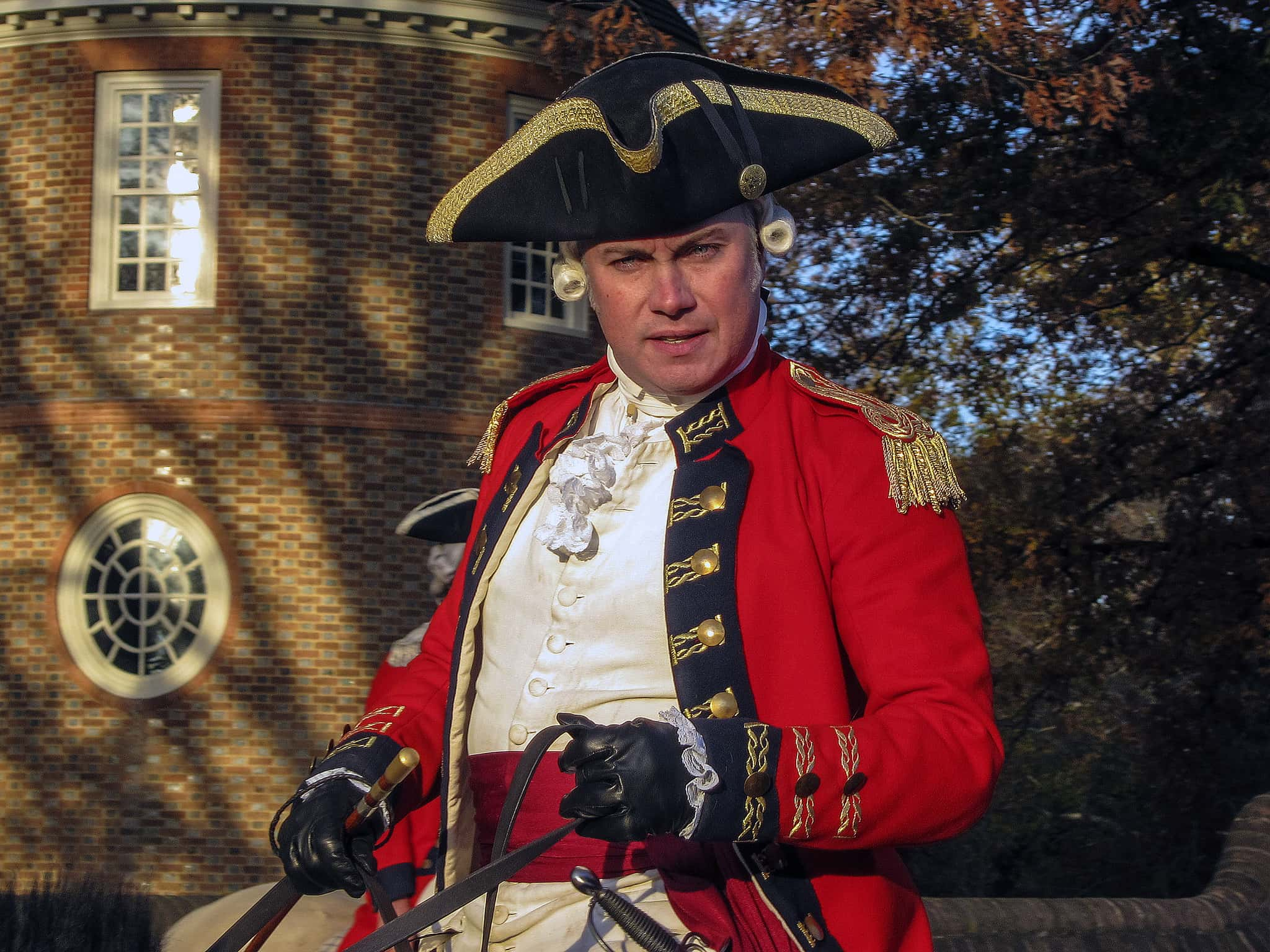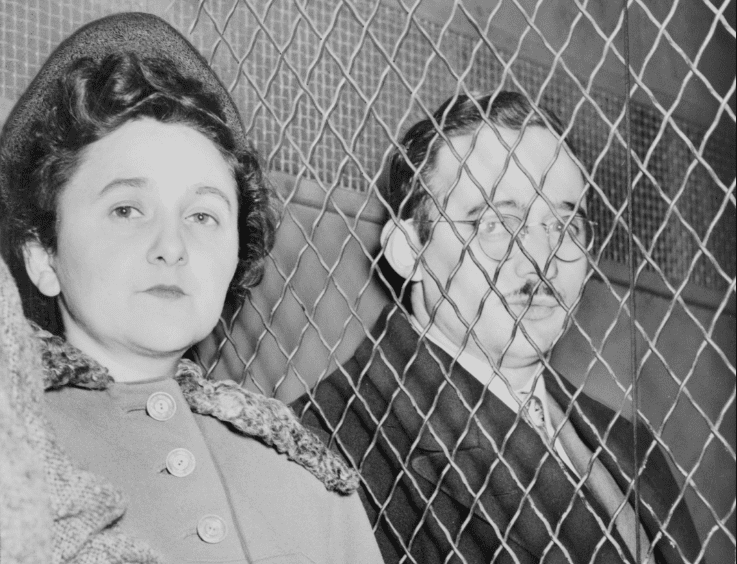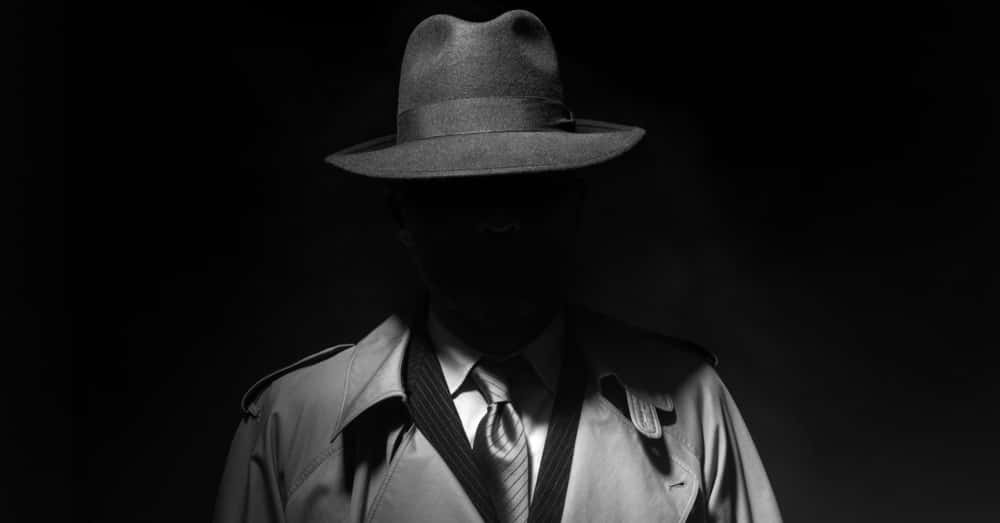Traitors come in many forms, from spies to assassins to political leaders. Some are motivated by fear, some by money, and some by a sense of right that transcends national ties. If they share a common thread, though, it’s that traitors do tend to lead eventful lives. Here are 42 two-faced facts about turncoats and backstabbers.
1. What Did You Say About My Mom?
Marcus Junius Brutus was a ringleader in the conspiracy to assassinate Roman dictator-for-life Julius Caesar in 44 BC. The two of them went way back, in fact: for decades, Caesar was sleeping with Brutus’s mother, and there were rumors that Caesar was Brutus’s father.

2. Dramatic Flair
The famous line “Et tu, Brute?” (“You too, Brutus?”) uttered by the dying Caesar in Shakespeare’s Julius Caesar were not his actual last words. One account reports that Caesar said the Greek words, “Kai su, teknon?” (“You too, child?”) to Brutus, but we’ll never know for sure.
3. Once A Turncoat, Always A Turncoat
Mir Jafar, a paymaster with the Bengal army, struck a deal with the British East India Company in 1757 in exchange for the crown of Bengal. But Jafar didn’t just betray his own country: after the British overstepped their agreement, Jafar then turned to the Dutch and invited them to push the British out.
4. Guilty By Association
The Athenian ladies' man Alcibiades was a pupil of the philosopher Socrates. Alcibiades was also a traitor to Athens, having defected to their enemy Sparta in the face of a scandal back home. The memory of this betrayal helped convince an Athenian jury to execute Socrates.
5. Guys & Dolls
Guy Fawkes, the Catholic terrorist who conspired to ignite British Parliament in 1605 is the source of the common English word “guy". Straw effigies of the man, which were called “guys,” would be burnt every fifth of November, and the term eventually came to mean just “man".
6. Remember, Remember
Though Britons are invited once a year to remember the treason of Guy Fawkes and his fellow conspirators, it seems that the message isn’t quite getting through: Fawkes was named the 30th Greatest Briton in a 2002 BBC poll.
7. Whither Canada?
Benedict Arnold was an American Revolutionary Conflict leader who famously betrayed his fellow countrymen. Before this happened, though, Arnold participated in an ill-fated American invasion of Canada. After losing 500 of his 1,100 men en route, Arnold helped capture Quebec City only to lose it just a few months later.
8. A Leg Up
Benedict Arnold was a great asset to the Americans before his defection, and he suffered two serious wounds to his left leg fighting for the Revolution. In Saratoga National Historical Park, there is a monument to just his left leg, which does not name the “brilliant soldier” it had been attached to.
9. A Warning To Others
For hundreds of years in England, the heads of those executed for treason were prominently displayed on London Bridge. The last head to be placed there was that of William Staley in 1678.
10. A Family Affair
Julius and Ethel Rosenberg, notorious spies who funneled American nuclear secrets to the Soviets kept it in the family. Ethel’s brother, David Greenglass, worked on the Manhattan Project and supplied the information that they passed to Russia. Greenglass was the first to be taken into custody and testified against his sister and her husband.
11. Damning Evidence
From the time of their arrest in 1950, Julius and Ethel Rosenberg were the focus of a raging debate about their possible innocence. Many continued to believe in them until the USSR fell and new information revealed that Julius, at the very least, had indeed been involved in espionage. Though more information has emerged detailing Julius’s involvement, some still believe that Ethel was innocent.
12. Pretty Big Deal
John Walker Jr., an American naval officer and Soviet spy, helped the USSR decipher over a million coded American messages between 1968 and 1985. The network he led has been described as “the most damaging Soviet spy ring in history".
13. Who’s The Boss?
Kim Philby, a member of the Cambridge Five spy ring, became the head of MI6’s anti-Soviet department in 1940. This meant that a Soviet spy was overseeing the entire British espionage effort against the USSR.
14. A Knight’s Tale
Anthony Blunt, another member of the Cambridge Five, received a knighthood in 1956. When he was found out as a Soviet spy in 1963, the British government offered to keep it under wraps in exchange for information. He lost his knighthood in 1970 when word finally got out.
15. Bad Impression
Soviet documents about the Cambridge Five show that these gentlemen were no James Bond. The Soviets profiled two of them, Donald Maclean and Guy Burgess, as “constantly inebriated” and “not very good at keeping secrets,” among other unimpressed descriptions.
 United Press International, Wikimedia Commons
United Press International, Wikimedia Commons
16. Doing The Math
Vidkun Quisling, the leader of Norway’s Third Reich-sympathetic puppet government in WWII, was a math prodigy. He invented a mathematical demonstration at the age of 12 that is still taught in Norway to this day.
17. Losing The Popularity Contest
When Third Reich Germany first invaded Norway, Vidkun Quisling unilaterally declared himself the country’s leader and encouraged support for the Nazis. However, facing open hostility from both the monarchy and the people of Norway, he resigned after only a week. The Nazis later reinstalled him as a puppet leader.
 Riksarkivet ,Wikimedia Commons
Riksarkivet ,Wikimedia Commons
18. Keeping It Clean
In medieval England, the punishment for treason was to be hanged, drawn, and quartered for a man, but women were burnt at the stake. This was because it would be improper to expose a woman’s uncovered flesh even at her execution.
19. How The Mighty Have Fallen
Wang Jingwei, the reviled leader of China’s pro-Japan puppet government in the 1940s, was much more popular in his youth. He had plotted to execute the Prince Regent of the Qing Dynasty in 1911 and was imprisoned. Following the overthrow of the Regent, Wang was released and became a national hero, until he betrayed his country.
20. Subtle
The punishment for treason under Roman Emperor Nero was to be stripped of clothes, you’re your head held up with a fork, and then be whipped to end.
21. Playing To Your Strengths
Robert Hanssen, the infamous American spy for the Soviet Union and later Russia, was at one point employed in the FBI’s counterintelligence unit, with a focus on the USSR.
22. Blood Money
Robert Hanssen gave the names of American spies to the Soviet Union in exchange for cash. At least three spies outed this way were executed by the Soviets.
 Federal Bureau of Investigation, Wikimedia Commons
Federal Bureau of Investigation, Wikimedia Commons
23. Drinking And Spying
Hitting the bottle is considered a sign of a potential security risk. Out of the 150 US citizens we know of who have spied on their country since the start of the Cold Conflict, at least 27% engaged in “excessive beverage use”.
24. Sibling Rivalry
Doña Marina, also known as La Malinche, was an Aztec slave who helped conquistador Hernan Cortes overthrow her people. She wound up with the Spanish after her own mother sold Doña Marina into slavery to keep her half-brother’s inheritance intact.
25. Namesake
The power of Doña Marina’s betrayal of her people is reflected in the fact that Mexicans still use the word malinchismo, based on her nickname, for someone who favors foreign cultures over their own.
26. How Do You Plead?
Ezra Pound, an American poet, and intellectual held supporter of Third Reich views and broadcast anti-American radio propaganda in Italy during WWII. He was indicted for treason after the conflict but escaped punishment by pleading insanity.
27. A Traitor Of Many Talents
Among other linguistic accomplishments, Ezra Pound liked to invent new words. The earliest recorded use of the word “whoops” appears in a letter he wrote before the conflict.
28. Listen To This
Once viewed as a traitor and now largely celebrated as a Canadian hero, Louis Riel led his Métis people in two rebellions against the Canadian government. Following his arrest in 1885, he had the chance to avoid execution by pleading insanity. Instead, he delivered two speeches that unequivocally confirmed his sanity, and was hanged.
29. Can’t Sit Here
After helping to found the province of Manitoba through a Métis uprising, Louis Riel was elected as a Member of Parliament three times. However, due to opposition from the Canadian government, he was never able to take his seat.
30. Shaken, Not Stirred
Sidney Reilly, a Russian by birth known as the “Ace of Spies”, worked for as many as four different nations before being executed by the Soviets. Stories of his adventures were published in the London Evening Standard, and he was reportedly an inspiration for the character of James Bond.
31. Call This Meeting To Order
It’s difficult to know what to believe about Sidney Reilly’s exploits since it’s thought that he made many of them up. One extraordinary story is that while working for the Allies he managed to attend a General Staff meeting with Kaiser Wilhelm himself, during the First World W.
32. Fall From Grace
Philippe Pétain is a massively polarizing figure in French history. In the First World Conflict, he was hailed as a hero for successfully holding the Verdun line against a crushing German offensive. However, his leadership of the Third Reich-puppet Vichy government in WWII means that he is now largely remembered as a traitor to his country.
33. Don’t Tell Me What To Wear
Kawashima Yoshiko was born a princess into China’s ruling family, but after the monarchy fell in 1912, she was adopted by a Japanese family. Yoshiko eventually became the leader of a pro-Japanese militia in the Second Sino-Japanese Conflict, famously wearing a men’s army uniform to lead her fighters.
34. A Star Is Born
Kawashima Yoshiko, the Chinese princess fighting for Japan, became a huge celebrity in her adoptive country. Not only was she a spy and militia leader, but she released a record and appeared as a hero in contemporary pulp fiction novels.
35. Not Worth It
Under Egyptian Pharaoh Ramses III, the punishment for treason was a slow and painful impalement.
36. The Die Is Cast
When Julius Caesar crossed the Rubicon and entered Italy with his army, he was committing an act of citizen conflict against Rome that is talked about to this day. However, he was not the first Roman general to commit such an act: the generals Sulla and Marius had both already marched on Rome in Caesar’s youth.
37. She Was Gone As She Lived
Mata Hari, the Dutch exotic dancer who spied for the French, was executed in 1917 for being a German double agent. As she faced her executioners, she refused a blindfold, then blew a kiss to the firing squad before being liquidated.
38. Men At Work
Of the 150 US citizens we know of who spied against America since the start of the Cold Conflict, 93% were men and only 7% were women.
39. A Thorough Job
Infamous double agent Aldrich Ames worked for the CIA hunting Soviet spies. At the same time, he was selling the Soviets information on American spies—eventually, he would name every single American spy working in Russia.
40. Stop Press
Mordechai Vanunu spent 18 years in Israeli penal institution for revealing details of his country’s nuclear arms program to the British press. Though considered a traitor in Israel, Vanunu has been nominated for the Nobel Peace Prize every year since 1987.
41. What A Nightmare
When the 300 Spartans made their stand against Persia at the Battle of Thermopylae in 480 BC, they used a narrow mountain pass to bottleneck the invaders. A local named Ephialtes betrayed the Greeks by showing the Persians a path around the pass. The name “Ephialtes” meant “nightmare” in Greek and came to be synonymous with “traitor”.
42. Pick A Side
Robert E. Lee, who would eventually lead the Confederate army in the American in state conflict, once swore allegiance to the Union. He was so close to joining the North that they tried to put him in charge of defending Washington, DC.
Sources: 1, 2, 3, 4, 5, 6, 7, 8, 9, 10, 11, 12, 13, 14, 15, 16, 17, 18, 19, 20, 21, 22, 23, 24, 25, 26, 27, 28, 29, 30, 31, 32, 33, 34















































